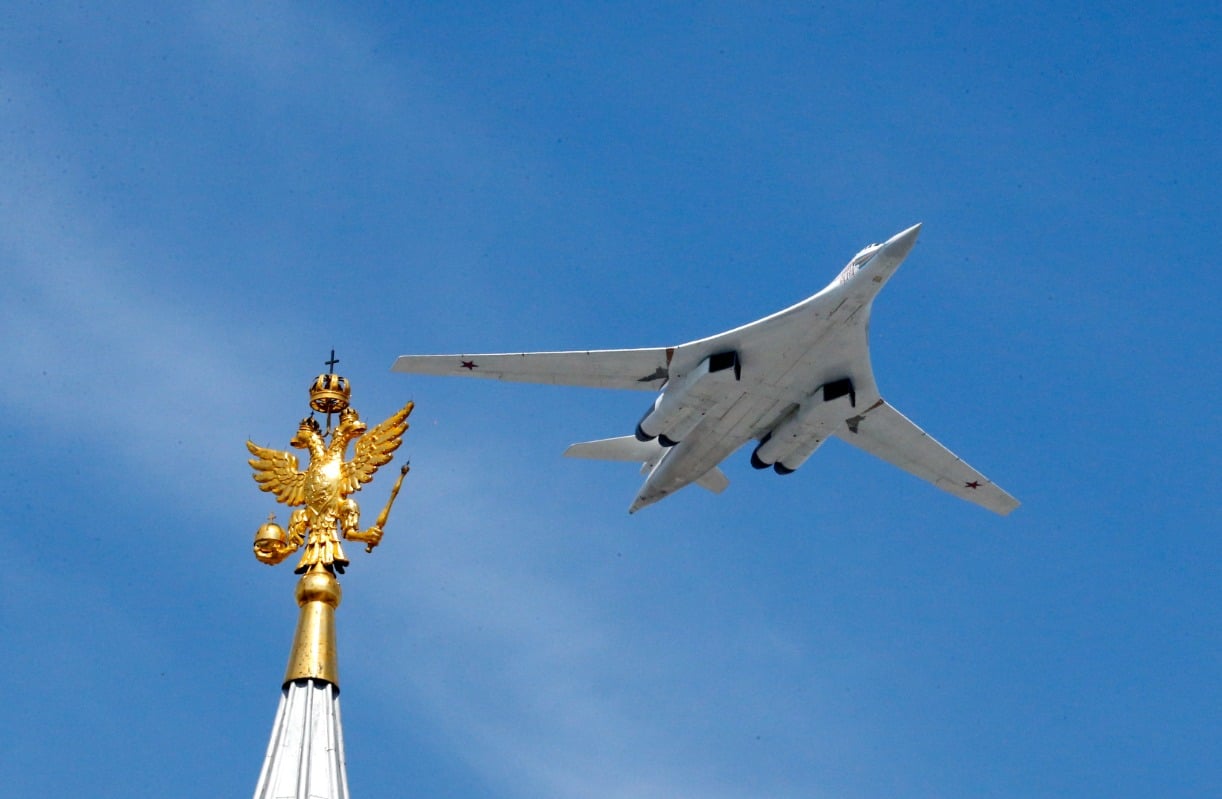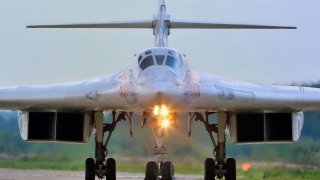Russia's 'New' Tu-160 Blackjack Supersonic Bomber Is No Joke
Despite facing difficulties in replenishing military equipment during its invasion of Ukraine, Russia has introduced an upgraded variant of the Tu-160 Blackjack bomber.
Summary and Key Points You Need to Know: Russia is struggling to replenish its military stocks amid the ongoing invasion of Ukraine. However, President Vladimir Putin has showcased an upgraded version of the Tu-160 Blackjack bomber, nicknamed the "White Swan."
-This modernized Soviet-era supersonic strategic bomber is touted to have new engines, weapons systems, and advanced features like a glass cockpit.
-Despite the Kremlin's claims of enhanced capabilities, it remains uncertain if the latest Tu-160 iteration can match the advanced bombers being developed by the U.S. and China amid rising global tensions.
New Tu-160 ‘White Swan’ Bomber: Russia's Latest Military Gamble
Russia is struggling to replenish stocks of main battle tanks, munitions, and infantry fighting vehicles amid its invasion of Ukraine.
However, Russian President Vladimir Putin insists Moscow’s defense industry is robust despite setbacks. In fact, Russian officials recently debuted an enhanced variant of the Tu-160 Blackjack bomber.
Putin flew in one of these new airframes, nicknamed the “White Swan,” earlier this year. Footage published by the Kremlin showed Putin positioned in the Blackjack’s cockpit.
Introducing the Tu-160 Bomber
Like many of the military systems deployed by Russia today, the Tu-160 bomber first flew in the Soviet era. The supersonic strategic heavy bomber was conceptualized to meet the Soviet need for an advanced bomber that could reach speeds in excess of Mach 2.3.
It was meant to counter the Americans’ new B-1 bomber program. When the Tu-160 entered service with the Soviet Air Forces, it would become the last Soviet strategic bomber designed prior to the collapse of the USSR.
The effort to revive Soviet-era Tu-160 bombers started in the early 2000s when the Russian Defense Ministry agreed to modernize 15 existing airframes.
The reintroduced bombers could use new long-range Kh-555 conventional cruise missiles, but they were not upgraded with advanced avionics as initially planned. The aircraft’s weapon bays feature launchers for the Kh-15P, which has solid fuel propulsion. This system can be fitted with either a nuclear warhead or a conventional 250 kilogram warhead, according to Air Force Technology.

How Advanced Is the New Tu-160?
The latest Tu-160 variant will reportedly include new weapons and engines, as well as a glass cockpit and other upgrades.
The CEO of the Rostec claims that the vast majority of the systems and equipment featured on the bomber will be more sophisticated than the initial Tu-160s. According to Tass, Sergey Chemezov added that, "Restarting the production of Tu-160 was quite a task for all of Rostec’s affiliates. Design documentation was fully digitized within the tightest deadlines. The technique of vacuum welding of titanium parts was restored, and the production of airframe units was resumed. Today we can say confidently that we have succeeded in all respects.”
Moscow’s efforts to field an advanced new bomber coincide with America’s next-generation B-21 Raider program and China’s next-generation H-20 Xi’an bomber program. Tensions in the Pacific, Black Sea, and Persian Gulf are continuing to escalate, pushing these major powers into a race to introduce more sophisticated bombers.
The Kremlin asserts much, but observers cannot be sure that the latest Tu-160 iteration will be as capable as Moscow claims.
About the Author: Maya Carlin
Maya Carlin, National Security Writer with The National Interest, is an analyst with the Center for Security Policy and a former Anna Sobol Levy Fellow at IDC Herzliya in Israel. She has by-lines in many publications, including The National Interest, Jerusalem Post, and Times of Israel. You can follow her on Twitter: @MayaCarlin.
All images are Creative Commons.


